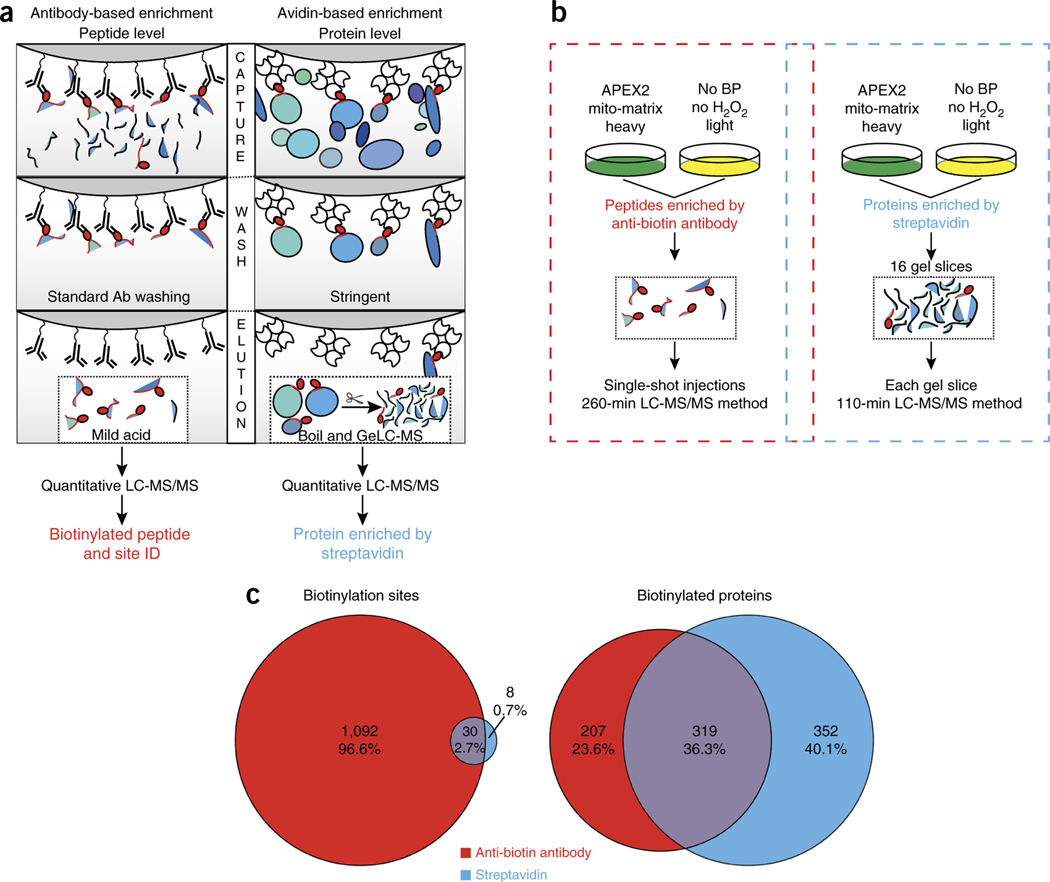Figure 1 |.
Comparison of antibody-based enrichment and avidin-based enrichment for detection of biotinylated peptides. (a) Schematic illustrating the difference in capture, wash, and elution for the identification of biotinylated peptides using either an anti-biotin antibody (left) or an avidin-based workflow (right). The red oval represents biotinylation. (b) Schematic illustrating the SILAC-based experimental design used to compare coverage of biotinylated peptides and proteins from proximity labeling samples using either anti-biotin antibodies for peptide enrichment (left) or streptavidin for protein enrichment (right). (c) Overlap of biotinylation sites identified using either anti-biotin-based antibody enrichment or streptavidin-based protein enrichment, in ≥2 replicates (left). Overlap of APEX-labeled proteins identified using anti-biotin antibody enrichment or using streptavidin for protein enrichment, in ≥2 replicates (right).

